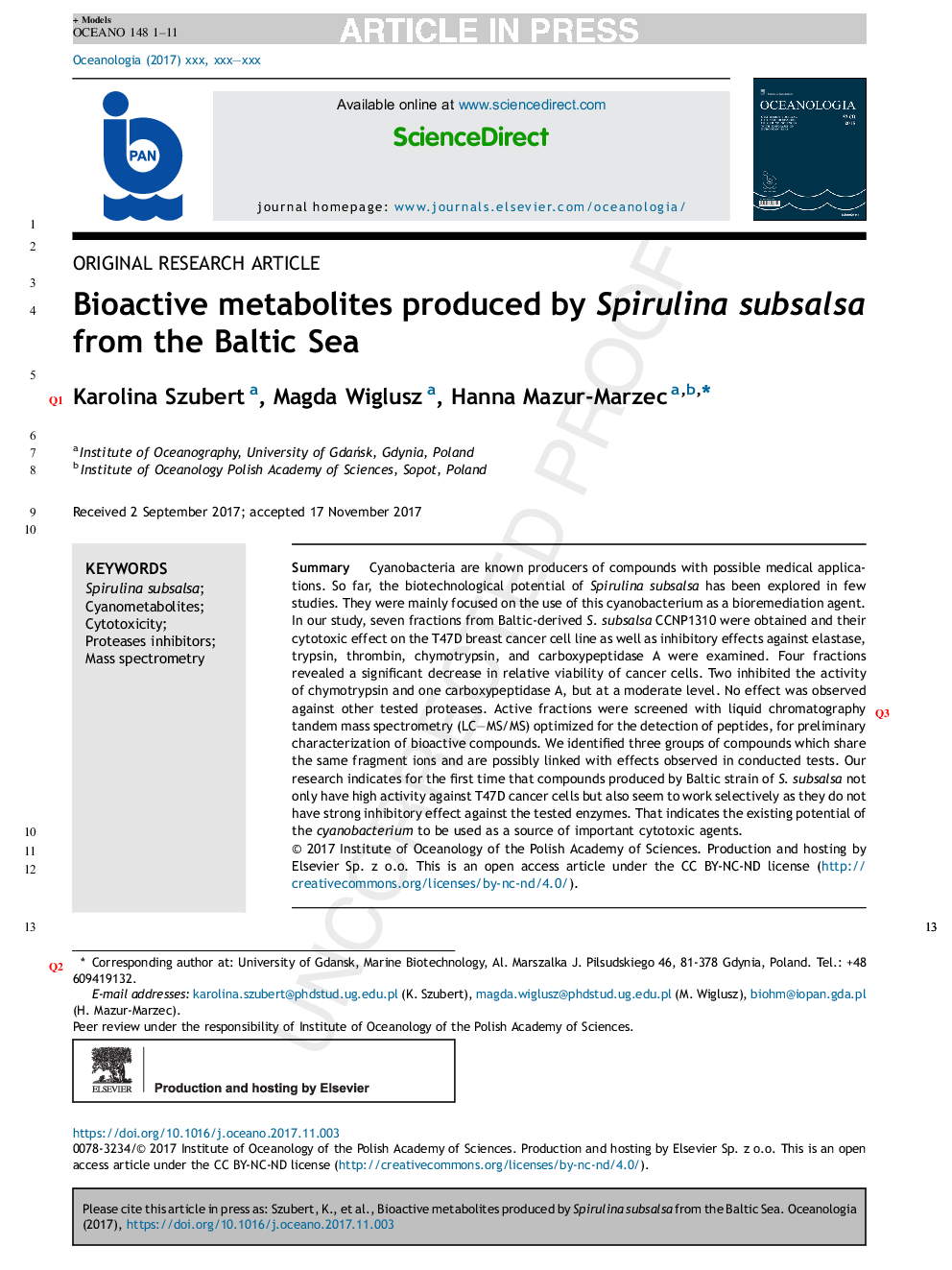| Article ID | Journal | Published Year | Pages | File Type |
|---|---|---|---|---|
| 8399644 | Oceanologia | 2018 | 11 Pages |
Abstract
Cyanobacteria are known producers of compounds with possible medical applications. So far, the biotechnological potential of Spirulina subsalsa has been explored in few studies. They were mainly focused on the use of this cyanobacterium as a bioremediation agent. In our study, seven fractions from Baltic-derived S. subsalsa CCNP1310 were obtained and their cytotoxic effect on the T47D breast cancer cell line as well as inhibitory effects against elastase, trypsin, thrombin, chymotrypsin, and carboxypeptidase A were examined. Four fractions revealed a significant decrease in relative viability of cancer cells. Two inhibited the activity of chymotrypsin and one carboxypeptidase A, but at a moderate level. No effect was observed against other tested proteases. Active fractions were screened with liquid chromatography tandem mass spectrometry (LC-MS/MS) optimized for the detection of peptides, for preliminary characterization of bioactive compounds. We identified three groups of compounds which share the same fragment ions and are possibly linked with effects observed in conducted tests. Our research indicates for the first time that compounds produced by Baltic strain of S. subsalsa not only have high activity against T47D cancer cells but also seem to work selectively as they do not have strong inhibitory effect against the tested enzymes. That indicates the existing potential of the cyanobacterium to be used as a source of important cytotoxic agents.
Related Topics
Physical Sciences and Engineering
Earth and Planetary Sciences
Oceanography
Authors
Karolina Szubert, Magda Wiglusz, Hanna Mazur-Marzec,
